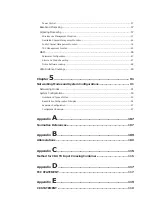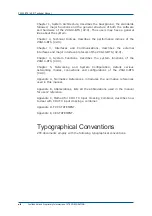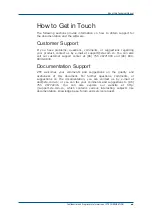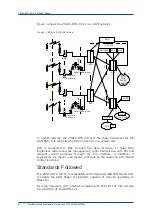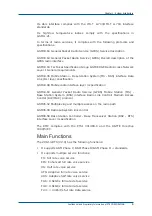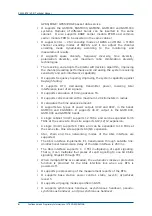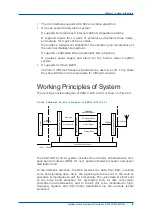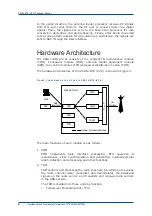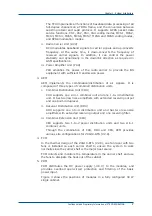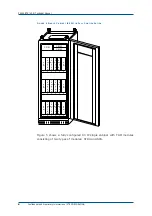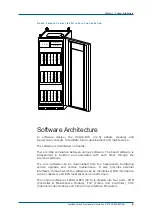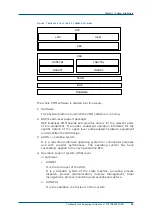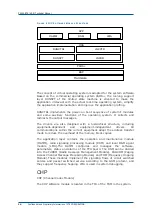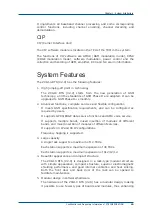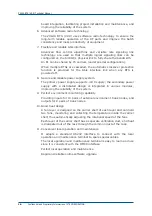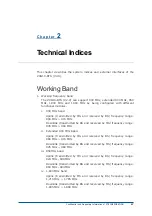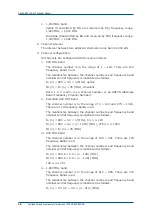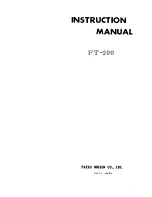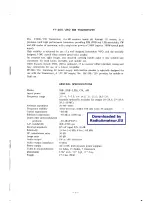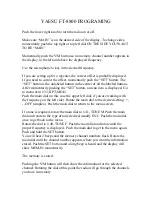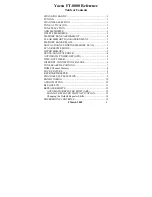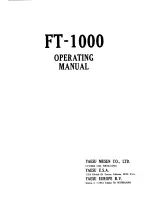
ZXG10-BTS (V2.9) Technical Manual
4
Confidential and Proprietary Information of ZTE CORPORATION
GPRS/EDGE: GPRS/EDGE packet data service
It supports the GSM900, EGSM900, GSM850, GSM1800 and GSM1900
systems. Modules of different bands can be inserted in the same
cabinet. It also supports EDGE carrier module ETRM and common
carrier module TRM to be inserted in the same cabinet.
It supports CS1 ~ CS4 encoding modes of GPRS and MCS1 ~ MCS9
channel encoding modes of EGPRS, and it can adjust the channel
encoding mode dynamically according to the monitoring and
measurement results.
It supports space diversity, frequency diversity, time diversity,
polarization diversity, and maximum ratio combination diversity
technologies.
The receiving end adopts the Viterbi soft decision algorithm, improving
the channel decoding performance and increasing the system receiving
sensitivity and anti-interference capability.
It supports frequency hopping, improving the system capability against
Rayleigh fading.
It supports DTX, decreasing transmitter power, lowering total
interference level of air signals.
It supports calculation of timing advance TA.
It supports cells covered with a maximum 120 kilometers in radius.
It calculates the time advance amount.
It supports two types of power output, 40W and 80W, in the bands
GSM900 and EGSM900. It supports 40 W output in the GSM1800,
GSM1900 and GSM850 bands.
A single cabinet (40 W) supports 12 TRXs, and can be expanded to 36
TRXs at the same site. One site supports S12/12/12 expansion.
A single (80 W) supports 6 TRXs, and can be expanded to 18 TRXs at
the same site. One site supports S6/6/6 expansion.
Star, chain and tree networking modes of the Abis interface are
supported.
The Abis interface implements E1 transmission through satellite link.
Unidirectional transmission delay of the Abis interface is 260 ms.
The Abis interface supports 1: 4 TEI multiplexing of LapD signaling.
That is, it can multiplex four pieces of LapD signaling to one 64 Kbit/s
signaling timeslot through TEI
When multiple BTSs are cascaded, the automatic crossover protection
function is provided for the Abis interface link when any BTS is
powered off.
It supports preprocessing of the measurement reports of the BTS.
It supports base station power control: static, level-6; dynamical,
level-15.
It supports all paging modes specified in GSM.
It supports synchronous handover, asynchronous handover, pseudo-
synchronous handover, and pre-synchronous handover.
Summary of Contents for ZXG10-BTS
Page 4: ...This page is intentionally blank ...
Page 8: ...Figures 121 Tables 123 ...
Page 9: ...This page is intentionally blank ...
Page 10: ......


